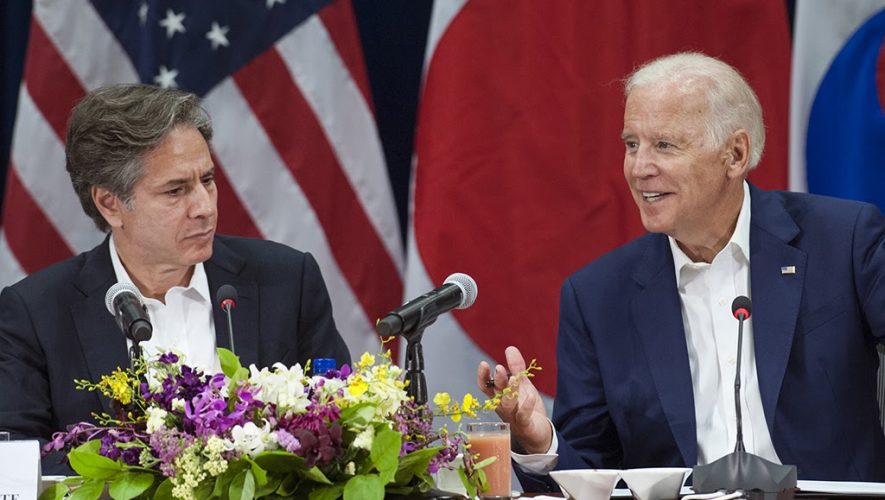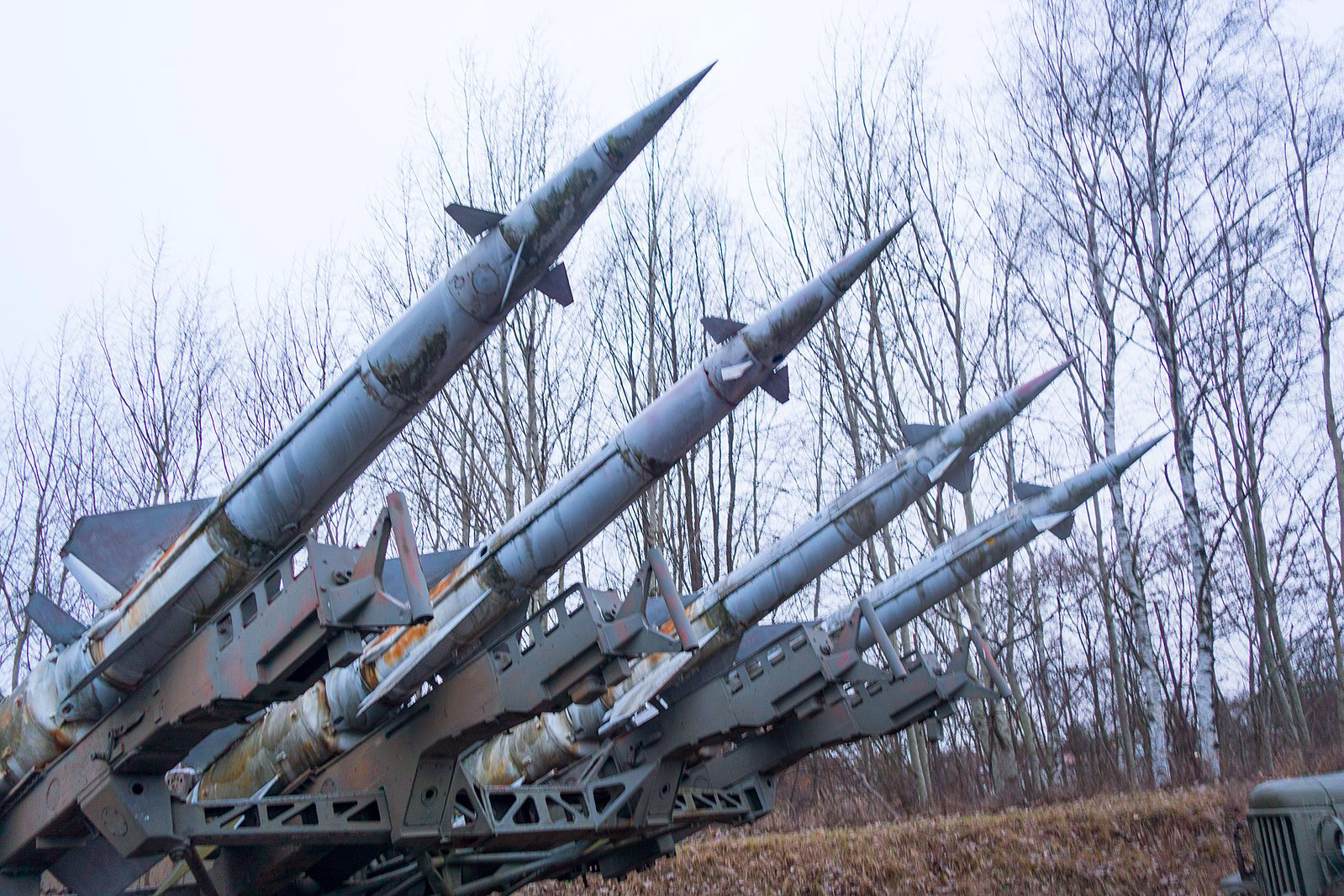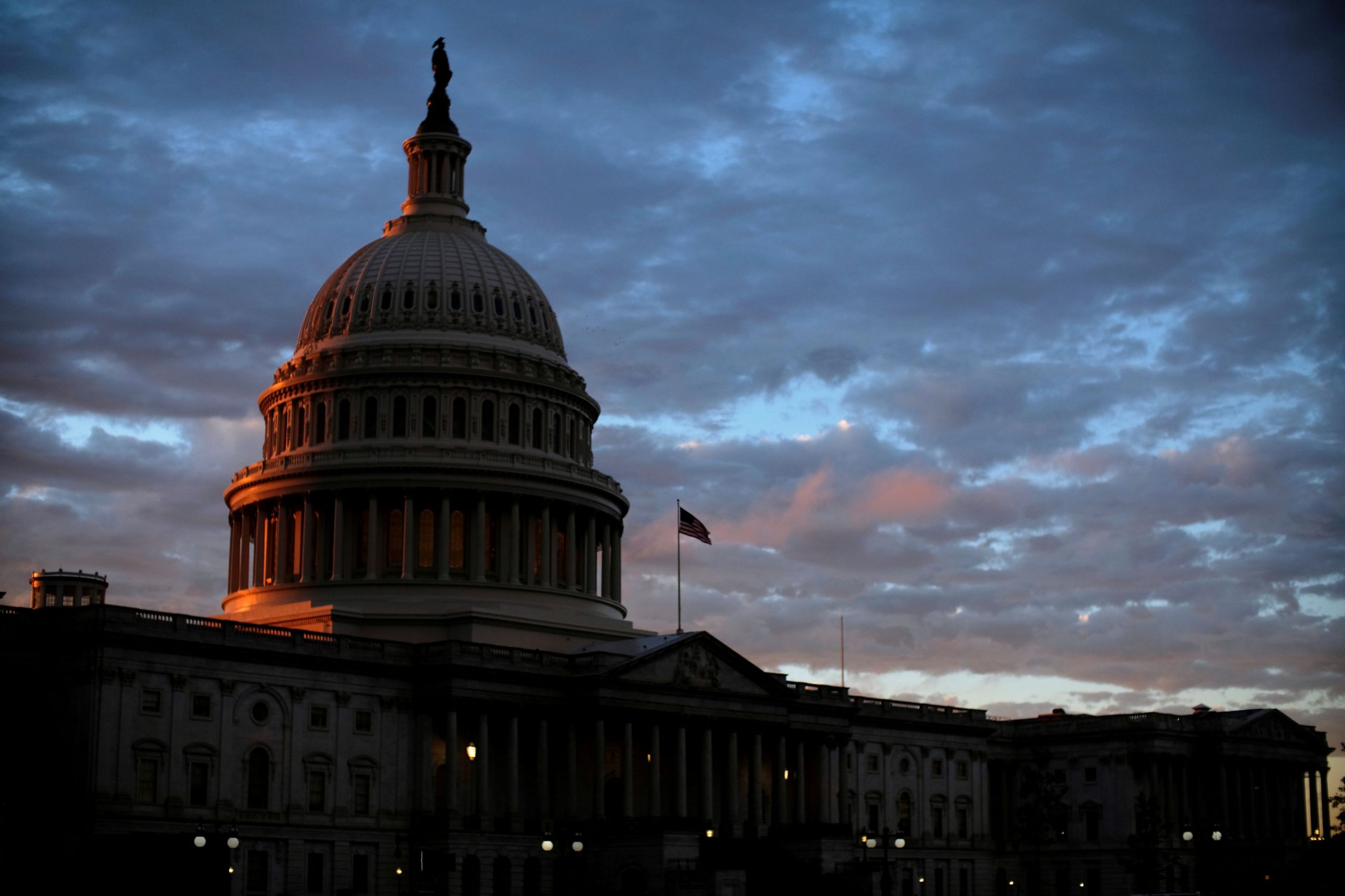The new Biden administration will have to address myriad challenges, from the COVID-19 pandemic to affordable health care to climate change. While his immediate focus is on domestic issues, Biden will eventually need to turn his attention to the Asia-Pacific, a region of geostrategic importance to Washington.
The security environment has changed significantly since Biden was vice president. The US is no longer the dominant power in the region. China has increased its economic influence and military presence, even challenging the US across the globe. North Korea continues to develop its nuclear arsenal and recently acquired technology to ensure its intercontinental ballistic missiles (ICBMs) accurately reach US targets. Russia continues to deploy considerable military and nuclear forces that are now unchecked by arms control agreements.
These developments have amplified anxieties among Asia-Pacific nations, many of whom have traditionally turned to the US for leadership. Some benefited from President Trump’s hawkish foreign policy while others found America’s commitment to the region sorely lacking. Biden must reassure these states that the US remains committed to regional security at a time when states are increasingly wary of choosing sides between the US and China.
The diverse interests among Asia-Pacific states makes any like-minded coalition a challenge to establish. But with political constraints on US capacity to tackle issues alone, Washington must build a network that can collaborate on many issues. And because China, North Korea, and Russia will contest US interests beyond the Biden years, it is more realistic to pursue coexistence while shoring up defense against acts of coercion and aggression. Biden must harness his foreign policy expertise to bring in a broader range of states and force those who violate international norms to pay.
US–China Competition
American credibility in Asia has taken a major hit as China assumes a larger role in international institutions and cultivates relations with states around the world. Trump’s flagrant disregard for multilateral institutions and allies reduced global trust in the US. A Pew poll even showed Trump’s perceived untrustworthiness exceeded Chinese President Xi Jinping’s in some countries. Biden faces a changed world that is skeptical of China but unable to present a unified message criticizing it.
Clearly, Asia-Pacific nations are not embracing China with open arms. The ever-expanding People’s Liberation Army—already one of the most adept in the world—and its coercive tactics in the South China Sea have resulted in territorial and maritime disputes with Brunei, Malaysia, the Philippines, Taiwan, and Vietnam. Beijing has a separate maritime dispute with Indonesia over fishing rights and claims sovereignty over the Japanese-administered Senkaku Islands. Tensions over Taiwan remain the most likely flashpoint between the US and China. Nevertheless, many of these states are unlikely to openly oppose China; they are more willing to balance, or ally with other nations against Chinese aggression instead.
However, Beijing’s financial prowess provides an opportunity for many countries. China remains Southeast Asia’s largest trading partner and gives aid to many states, including critical partners of the US. Moreover, its Belt and Road Initiative—a plan to build trade and infrastructure networks between Asia, Europe, and Africa—involves over one hundred countries and two hundred billion dollars to date.
The Chinese-led Asia Infrastructure Investment Bank—an alternative to the World Bank and the US-and-Japan-led Asia Development Bank—is a critical source of funding for Asia. US allies such as South Korea, Australia, and New Zealand are members, capitalizing on the bank’s high ethical standards and the economic opportunities it provides. The ADB and AIIB view each other as “complementary partners” in meeting the Indo-Pacific’s twenty-five-trillion-dollar need for regional infrastructure funds; the AIIB also helps China retain its global influence.
The Asia-Pacific’s reluctance to pick between the US and China provides an opportunity for Biden to strengthen existing ties and forge new relationships. On the one hand, states are much more likely to view China as a threat now. Australia and India have ongoing conflicts with Beijing and, until now, generally avoided criticizing it. Australia’s conflict has caused the island nation to join the Malabar naval exercise—an annual drill between the US, India, and Japan—for the first time since 2007. Japan has elevated China’s threat level from “grave concern” to “national security threat.” As a result, Tokyo has deepened relations with Association of Southeast Asian Nations (ASEAN) members through a multifaceted approach.
There are some promising frameworks that could augment US efforts. In 2017, the Trump administration adopted the Free and Open Indo-Pacific (FOIP) initiative—the brainchild of former Japanese Prime Minister Shinzo Abe. The initiative seeks to institutionalize norms and promote a rules-based order among Pacific and Indian Ocean states. Its open-ended language could be better for attracting neutral states than a China-targeting containment strategy.
A sticking point is the divergence between state interpretations of FOIP. Unlike Japan, the US views FOIP as a zero-sum confrontation with China in practically every domain and runs the risk of disregarding allied interests. The Trump administration disrespected regional partners by sending lower-level officials to meetings with state leaders. Trump pushed partners away further by criticizing Vietnam for high trade surpluses, suspending favorable trade conditions with Thailand, and demanding extraordinary increases in alliance burden sharing from Japan and South Korea.
ASEAN has been wary of joining a US-led strategy and values its own centrality, establishing a separate ASEAN Outlook on the Indo-Pacific in 2019 which stresses multilateral security cooperation between equal member states. For the initiative to function, the gap between states’ strategies must be bridged through dialogue between the US, ASEAN, Japan, India, and Australia. Biden has signaled a potential shift in the FOIP language, choosing to call it “secure and prosperous” over “free and open.” This may be a good sign that the US is serious about bridging the gap, as ASEAN states are likely to prefer this shift.
Finally, the Quadrilateral Security Dialogue (Quad)—the US, Japan, India, and Australia—could become an anchor to promote a free and fair regional order. It could cause concerns for China once commitments deepen; as each member faces their respective issues with China, they have increased their defense cooperation in multiple domains and sought to deepen understanding through joint military training. In particular, India’s increased commitment to the Quad is a promising start that could improve interoperability.
However, the Quad’s strongest tie is the US–Japan alliance. Tokyo continues to work with Washington to move beyond interoperability toward interdependence, bolstering its military capabilities in the southwestern islands in anticipation of Chinese maritime activities.
The issue with the Quad’s institutionalization will be ensuring it does not eclipse ASEAN or other regional institutions in setting the rules of the road. While increased cooperation is welcome, the Quad must integrate its strategic actions with that of other states.
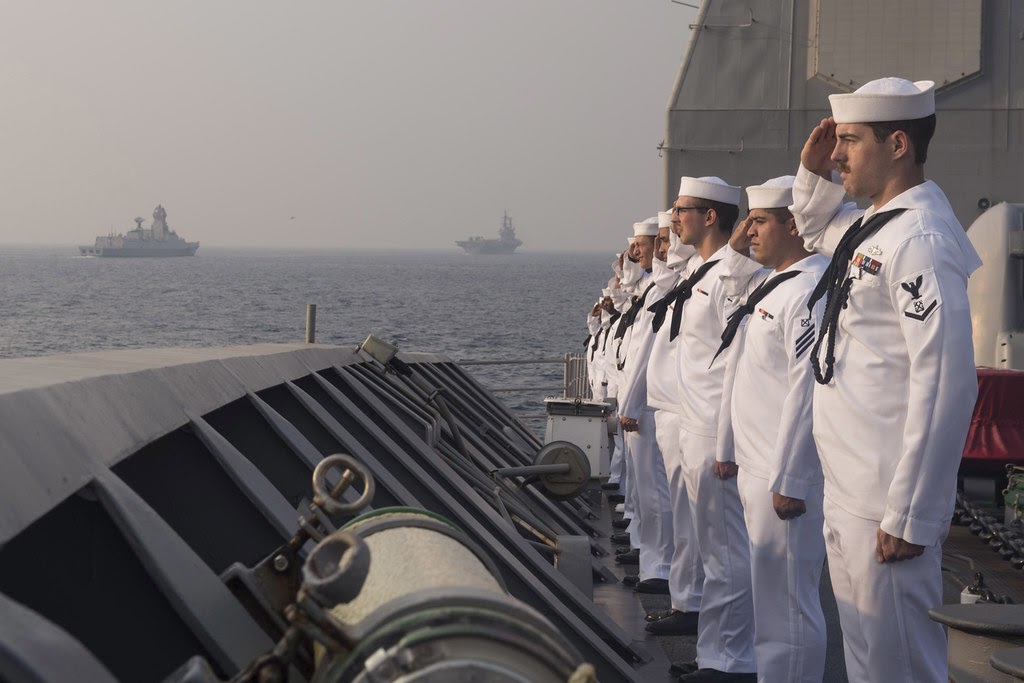
America’s military and economic advantages over China are eroding. China’s ground force is the largest in the world, while its navy and air force are the largest in the region. It possesses more land-based missiles than the US and is expected to acquire two hundred warheads capable of threatening the US in the next five years. Unchecked, Beijing could further chip away at Washington’s influence in the Asia-Pacific, shaping the region as it sees fit. China has already intensified preparations for “informatized warfare,” focusing on high-tech weaponry like hypersonic weapons and using space, cyber, and other newer domains. Its focus on military–civil fusion could help China overtake the US technologically.
Trump’s disdain for multilateral institutions also eroded US influence on trade. China recently concluded the fifteen-nation Regional Comprehensive Economic Partnership deal with US allies including Japan and South Korea; it has also shown an interest in joining a trade deal Obama built as an anti-China agreement. Though Biden has not committed to rejoining—and will likely face domestic opposition—it would be the first step to reaffirming America’s commitment to free trade and multilateralism. Expanding the scope of cooperation, from intelligence sharing to general capacity building, will help Biden regain the confidence of Asia-Pacific states.
The US needs to invest more time and money to compete with China, but is already spread thin on its Asia-Pacific budget. Recent defense budgets allocated several billion dollars to regional initiatives such as the Pacific Deterrence Initiative, but the US still allocates more to Europe-related initiatives than to Asia-Pacific ones. And while Biden has indicated some interest in the Asia-Pacific, it is unclear how much he will prioritize it.
Prioritizing investments will prove America’s commitment and help convince partners to reciprocate. The US is likely to join increasingly concerned allies in continuing to support Taiwan, all to ensure China does not further encroach upon Taiwanese sovereignty. In the Indo-Pacific, Biden can expand the BUILD Act to increase development finance capacity. Targeting funding enables the US to buttress its troops’ readiness across Asia and promotes cohesion with partners, viewing them as assets to invest in rather than costs to cut.
The US must create an extensive network of partners. These connections may be more willing to cooperate with Washington on some issues than others, so the US must also be flexible. For starters, Biden can honor ASEAN centrality—which sounded like lip service under Trump—by attending ASEAN meetings himself and actively participating in a number of regional forums such as the East Asian Summit. These forums can be a venue to gauge states’ interests and areas where US–China cooperation is possible.
Biden must come to terms with a changed Asia-Pacific that has acknowledged the inevitability of US–China coexistence. We need a competitive world governed by rules and not a zero-sum game.
The Korean Peninsula at a Stalemate
Biden has signaled an interest in restarting disarmament talks with North Korea. Kim Jong-un recently called the US his country’s “biggest enemy” and promised further nuclear advancements. The country frequently resorts to threats and missile tests in the absence of diplomatic breakthroughs.
Kim also recently made a rare admission that North Korea’s five-year economic plan had failed in almost all sectors. COVID-19-induced border closures added to these woes, resulting in a 79 percent reduction in trade with China—its largest trading partner—during the first eleven months of 2020. Natural disasters further compounded the problem, with low crop yields prompting price increases and food shortages.
But despite the economic crisis, North Korea’s threat is as salient as ever. The Department of Defense labeled North Korea a “rogue state,” contending that Pyongyang violates the cap on refined petroleum imports, smuggles coal, and commits monetary cyber theft. But US concerns derive mostly from North Korea’s nuclear weapons program and its ability to reach the US and US-allied targets. The last few administrations have focused on completely dismantling the program to no avail. Largely due to such ineffective policymaking, North Korea has ramped up its efforts, unveiling a new ICBM and acquiring the technology to ensure missiles do not burn upon reentry. Controlling re-entry is viewed as Pyongyang’s final hurdle to an accurate missile system.
Biden is likely to opt for smaller agreements and sustained lower-level talks. Experts believe a production freeze is more realistic and must happen before denuclearization talks. Biden’s likely departure from the “win big” mentality in US foreign policy—where Washington demands unattainable goals for few concessions—is a welcome development. Pyongyang typically sets a high bar for beginning negotiations, demanding sanctions relief and a US exit from the Korean Peninsula. Now that the country could potentially attack the US mainland, results matter; Biden must adopt an action-for-action negotiation of mutual concessions. The US must be willing to give up more than it has in the past, avoiding a “hard-landing” advocated by traditional foreign policy circles.
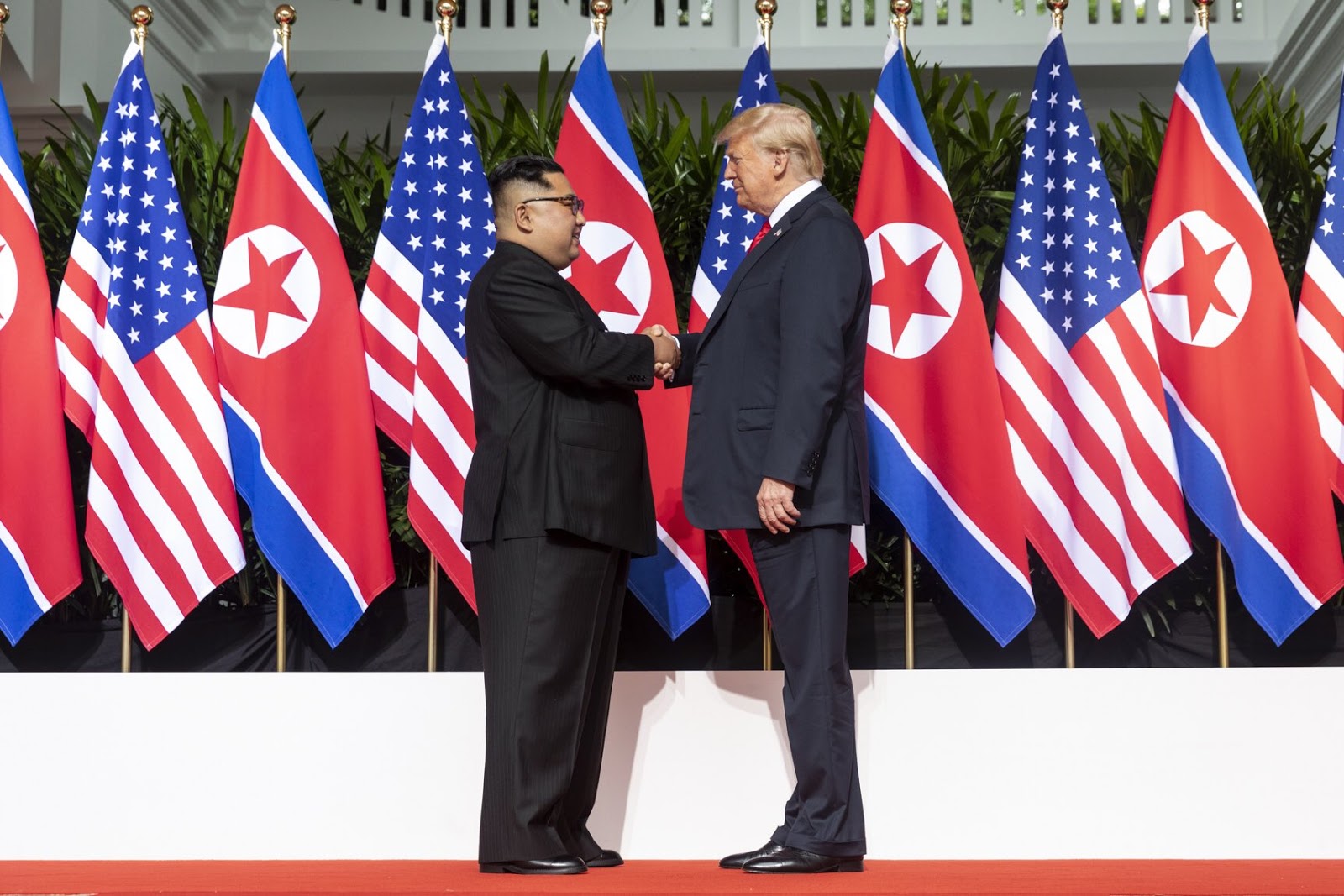
Biden is also keen to repair Japan–South Korea relations, which have hit a historic low in recent years. He must ensure that the two US allies most impacted by North Korea’s missiles work in tandem to deter Pyongyang. This trilateral partnership is already one of the most important defense cooperation mechanisms in the Asia-Pacific. South Korea houses almost thirty thousand US military personnel and America’s largest overseas military facility; Japan hosts over fifty thousand service members and regularly ups its defense spending. The most recent development plan included two missile-defense-equipped warships and stand-off anti-ship missiles aimed at improving anti-access area denial capabilities.
While resolving historical issues will be strenuous, the US can be an effective intermediary for security cooperation. All three countries take part in several exercises including the Rim of the Pacific maritime exercise and the eight-nation enforcement coordination cell to enforce UN sanctions against North Korea’s oil transfers. The missing link is better Japan–South Korea bilateral cooperation. Real-time information sharing is critical, so bolstering these ties will ease decision-making.
There have been some positive developments, with lawmakers on both sides visiting each others’ countries last fall. Biden can maintain this momentum by strengthening cooperation in missile defense, reaffirming the General Security of Military Information Agreement’s intelligence-sharing mechanisms, and consulting state leaders when taking action on North Korea.
Biden must balance realistic negotiations with assurances to allies that they will not be left out. A common concern Japanese officials and South Korean conservatives raise is the possibility that shorter-range missiles—incapable of reaching the US—are left out of negotiations. For now, this can be alleviated by shoring up ballistic missile defense and strengthening trilateral security cooperation. In the meantime, the US should seek to coordinate policy with other interested parties. Although difficult given conflicting interests, Beijing and Moscow may be more willing to accept a freeze rather than complete nuclear dismantlement. The South Korean government will also likely find Biden’s approach more accommodating to its revamped efforts to reconcile with North Korea.
The next few months will shed light on how Biden and Kim intend to proceed. Biden must first decide how to resume talks with Pyongyang, then consider whether to continue Trump’s expensive missile defense plans—which included testing a high-profile ICBM interceptor. The US will be walking a tightrope between bolstering defense and diligently negotiating a freeze.
Russia Continues to Undermine US Strategy in Asia
Russia has less of a presence in the Asia-Pacific than in Europe, but continues to threaten US interests. Its main interactions in the Asia-Pacific are energy exports and arms sales to alleviate the effects of US sanctions. Russia also competes with the US and China to take control of the Arctic, now viewed as a potentially shorter route from the Atlantic to Asia. If the route becomes reliable, it could slash costs and shipping times. The Arctic region is also strategically important to America’s competitors, who could use its proximity to the US as leverage in a military confrontation.
The Sino-Russian relationship is a cornerstone of Moscow’s foreign policy. China has increased investments in Russia, purchased advanced military equipment, and conducted joint exercises. Russia’s influence stems from this partnership, and both nations prefer the status quo on the Korean Peninsula and oppose US hegemony and liberalism. However, they envision the future world order differently; Russia wants a three-power system, while China wants to equal the US and reform the international system. For now, Moscow largely follows Beijing’s lead in the Asia-Pacific, focusing on destabilizing and fragmenting America’s network of partners.
Moscow acknowledges it plays second fiddle to Beijing and has sought to redress that by diversifying its relations with Asia-Pacific states. Russia has reached out to Japan over a possible resolution to the territorial dispute, stepped up security cooperation with Pakistan, and emphasized its importance in denuclearization talks at the first-ever summit with North Korea.
India is another key partnership, especially since New Delhi already purchases the most arms from Moscow. It was the Kremlin that provided a path for India’s membership in the Shanghai Cooperation Organization and worked to jointly form the New Development Bank. But not everything is rosy for Russia, as the Kremlin worries it cannot warm up to New Delhi as long as India strengthens its relationship with the US. In the meantime, Russia is likely to continue to undermine the rules-based order in the Asia-Pacific.
Arms Control Rests on a Proactive Biden Administration
Biden has a few weeks to follow through with his pledge for a five-year extension to New START, the last arms control agreement between the US and Russia. Without it, Russia would be allowed to expand its nuclear and missile arsenal without constraints. If the two largest nuclear powers can’t reduce their arms, smaller nuclear powers have little incentive not to expand their arsenals.
Resuming talks with Russia will reduce global arms and help avoid an uncontrollable arms race. Commitments and compliance by Washington and Moscow could prompt a similar—albeit slower—reduction from Beijing. And a freshly motivated US could showcase its leadership capabilities in multilateral frameworks. This will help rebuild trust in American leadership in the arms control sphere and progress other spheres such as climate change and cybersecurity that require broad coalitions.
Finally, the demise of arms control agreements would undermine the integrity of arms control and relevant multilateral institutions like the Treaty on the Prohibition of Nuclear Weapons. These larger frameworks become obsolete if bilateral agreements vanish. Biden must commit to bilateral agreements and work to move the ball forward.
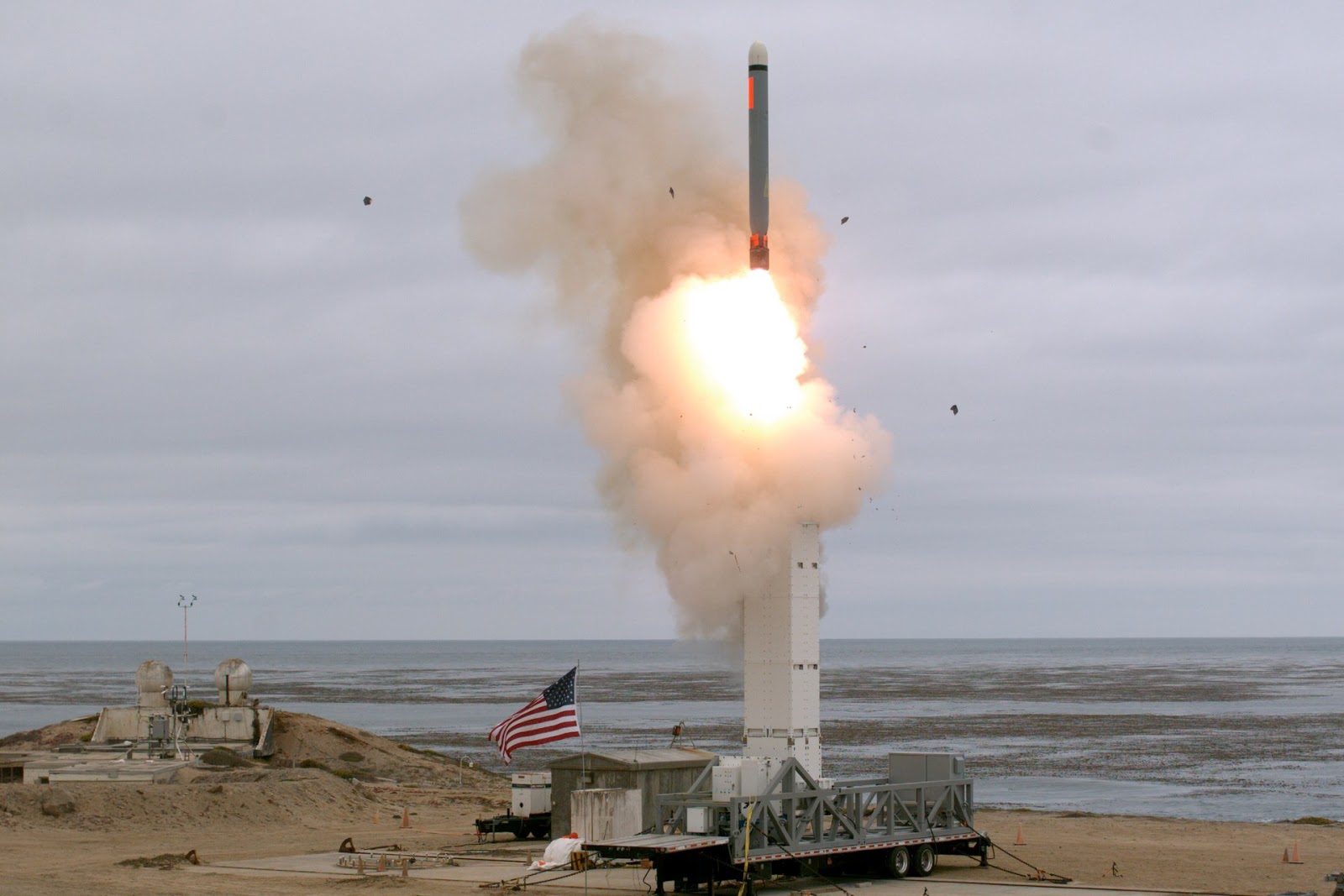
Several major hurdles will shape Biden’s arms control policy. Domestic disagreements over whether to pursue stronger nuclear deterrence or curtail America’s nuclear program will persist. Progressive Democrats are likely to demand a “no first use” policy; they introduced a resolution calling for one last year. Questions remain as to whether Biden will move the US in that direction and scale back nuclear weapons spending.
Arms reduction talks are more complex today because weapons are increasingly sophisticated. Experts are debating whether hypersonic missiles—which fly low and fast enough to evade detection—will become the new normal within a few decades. The US, China, Russia, and India are developing hypersonic missiles, with Moscow reportedly successful in deploying a nuclear-capable one. And because defense costs far more than offense, states tend to pursue offensive weapons to impose costs on adversaries.
This seemingly endless cycle of development can be managed only through arms control agreements. It is naïve to believe that the US will unilaterally reduce weapons while Russia and China ramp up their capabilities. When Trump withdrew from the Intermediate-Range Nuclear Forces (INF) Treaty, his administration cited China’s unchecked expansion of nuclear warheads. They also argued that China had produced thousands of INF-range missiles—all the while, the treaty barred the US and Russia from developing or deploying such weapons. The most feasible strategy is to incrementally reduce the amount and range of weapons each country possesses to a controllable level.
As one of the largest nuclear powers, the US has a sizable role to play in committing to substantial reductions and prodding other nuclear powers to follow. Biden should begin working with Vladimir Putin to resolve outstanding issues over verification and newer kinds of systems currently outside the scope of arms control. Even a non-comprehensive deal is better than unconstrained competition.
The US should strive for stability and predictability before including China and other nuclear states. Concurrently, other concerned states in Europe and Asia should establish channels of communication on reforming the international arms control regime. Beijing may be more receptive to an international reduction discussion than to bilateral ones. Once at this stage, the US should refrain from vague commitments and decide what to regulate in exchange for its own reductions. This will help build confidence among the parties and acknowledge each state’s priorities.
Every country would benefit from arms control. Through targeted investments in other capabilities, Biden can try to offset Chinese and Russian advantages without abandoning nuclear weapons reduction. Although the complete elimination of nuclear weapons is unlikely to happen during his term, Biden can make it manageable by proactively engaging in arms control efforts.
An Innovative Network of Partners
Biden cannot tackle every issue. Domestic affairs and budget constraints are plentiful. But the world will not wait for the US. It did not stand idle the last four years, costing Washington its global influence and elevating Beijing’s. US–China competition now extends to military, economic, technological, and ideological spheres.
US partners are balancing their priorities in each sphere, seen most recently when the EU agreed on an investment accord to open new Chinese markets for European companies. This warrants concern but will be better dealt with under a Biden administration more willing to listen to allies. Biden will be cautious of alienating allies and target efforts to convince them of the benefits rather than the risks of choosing China.
The US, more so than China, can unite states around a common cause. Biden can construct a network of states that can work on the issues most pressing to them. This is a more targeted and flexible outlook emphasizing blocs rather than hard alliances. Such an approach will let partners make independent decisions and encourage them to reciprocate efforts. Separate coalitions will also make it easier to reach out and cooperate with those closer to China, such as Cambodia and Myanmar.
Regional strongholds such as Japan and India must step up commitments as well, nurturing their network of partners and pooling resources to promote a rules-based world order. Other issues—from maritime security to 5G competition to human rights—also open up possibilities for Asia–Europe cooperation. Recent interest from Germany, the UK, and France in pursuing an Indo-Pacific strategy could bring further cooperation across continents. A strong commitment from allies will be just as important as America’s commitment to tackling regional issues. The US should also work with China on issues such as climate change and reinforce conflict-resolving mechanisms whenever possible.
Although Biden enters the Oval Office at a time of heightened uncertainty, there is reason to believe in a rejuvenated US presence in Asia. Biden tapped Kurt Campbell—a veteran diplomat well-versed in Asia affairs—as the National Security Council’s Indo-Pacific coordinator. Campbell recently shared his views about the need for a flexible strategy to bring peace and stability to the region.
There are high expectations that the Biden administration will bring a renewed commitment to leadership in multilateral efforts to counter China’s coercive tactics, North Korea’s nuclear threat, and Russia’s looming nuclear presence. Whether Biden succeeds in sowing the seeds of “competitive coexistence” depends on how his administration rolls out a coherent and consistent strategy.

